- Home
- James Patterson
Murder of Innocence (Murder Is Forever) Page 17
Murder of Innocence (Murder Is Forever) Read online
Page 17
“Think about it,” Christopher says. “If there’s any truth to the rumors that they were having an affair, then he certainly had motive.”
“If what you’re suggesting turns out to be true,” Pearson says, “it would be unprecedented.” In the eighty-year history of the FBI, no acting agent had ever been convicted of a homicide.
“If he weren’t an agent,” Christopher continues, “he’d go right to the top of the suspect list, wouldn’t he?”
The agents look around at one another, wondering if anyone will argue with Christopher’s logic.
No one does.
“Okay,” Pete Pearson says finally. “Let’s zero in on Putnam. If it turns out he’s clean, we’ll scratch him off our list and move on. But if we find anything …”
He doesn’t finish the sentence. Everyone in the room understands the weight of what they’re about to do: investigate one of their own.
CHAPTER 32
Miami, Florida. May 1990
PETE PEARSON WAITS IN the conference room at the FBI’s Miami office with Agent Jack Cornell and Detective Steven Gerards from the Kentucky State Police. None of the men speak. They’ve agreed to let Pearson take the lead in the interview, although both Cornell and Gerards will be free to jump in with follow-up questions.
Gerards, who investigated Susan Smith’s disappearance before the FBI joined in, has long been suspicious of Mark Putnam. Pearson remains skeptical. He thinks Mark might shed some new light on the case but doesn’t expect much more beyond that.
When the special agent in charge of the Miami office, Graham Blevins, walks in with Mark, Pearson rises from his seat, putting his thoughts aside. He shakes Mark’s hand. The young man has a firm grip.
“Thanks for agreeing to meet with us,” Pearson says.
“No problem,” Mark says. “Whatever I can do to help.”
Pearson thinks Mark looks a little concerned but figures that’s to be expected. It’s not every day that agents from one FBI office come to another to conduct a criminal investigation. But Mark has expressed a willingness—even an eagerness—to help with the case. He declined to have a lawyer present.
“Mark, we’ve run into some dead ends while looking for this missing informant,” Pearson says. “It seems like you knew her pretty well, and we’re just hoping there’s something you know that might open some new avenues for us.”
“Of course,” Mark says, sitting up straight with his hands resting casually in his lap.
“Tell us a little about Susan and how you met her.”
Mark describes their introduction and how crucial Susan was to the FBI’s arrest of Paul Collins, aka Cat Eyes, for a series of bank robberies that had plagued the area.
“How old is Susan?” Pearson asks, flipping through his notes.
“She was twenty-eight,” Mark says.
It’s a small comment, but Pearson feels the atmosphere in the room change. He doesn’t let on that anything has happened, doesn’t glance at Jack Cornell or Steven Gerards, doesn’t miss a beat as he jumps to his next question.
But he noticed. And he’s sure the others did too.
Mark Putnam used the past tense: She was twenty-eight.
CHAPTER 33
Washington, DC. Twenty-Four Hours Later
MARK PUTNAM SITS IN the chair trying not to feel anxious as the polygraph technician hooks him up to the machine. There’s one sensor monitoring his breathing, another for his pulse, a third for his blood pressure, and finally one to check his perspiration. Mark tries to will himself to relax. He wants to close his eyes and take a deep breath, but he doesn’t want to appear concerned about anything.
Pete Pearson stands nearby, observing. When the test begins, he’ll leave the room, but for now, he’s making sure neither Mark nor the technician need anything. Pearson sat next to Mark on the airplane up here this morning, and the two of them chatted about who had the best chance in the NBA playoffs and whether this would finally be the year Michael Jordan got a ring. But it had been a strained conversation. Neither of them wanted to talk about the case, but they also didn’t want to just sit in silence, ignoring each other.
After Mark was questioned for six hours yesterday, Pearson asked if he’d be willing to take a polygraph test. Mark knew they all now suspected him of being involved in Susan’s disappearance, but he didn’t know how to decline the polygraph without looking guilty.
Instead of arranging a polygraph in Miami, Pearson said they would fly him up to the headquarters in Washington, DC.
“We’ll make sure it gets done right,” he said. “We’ll clear all this up.”
He said this matter-of-factly, but they wouldn’t be flying all the way to headquarters if the agency wasn’t taking this very seriously. A polygraph test would be inadmissible in court, but Mark knows that if the results suggest he is being deceptive, they’ll keep investigating him until they find evidence. If he passes the test, they’ll finally leave him alone.
“We’re ready,” says the technician.
As Pearson leaves the room, the technician positions himself behind his machine, which fits inside a briefcase. From where he sits, Mark can’t see the needles scrolling out results on the moving paper.
The technician starts with typical yes-or-no questions to establish baseline readings.
“Is your name Mark Putnam?”
“Are you married?”
“Do you live in Florida?”
“Do you work for the FBI?”
But once he’s through those, the technician gets straight to the point.
“Did you have a sexual relationship with Susan Smith?” he asks, his voice monotone.
“No,” Mark says, trying to believe his own answer.
“Did you have a role in her disappearance?”
“No.”
“Did you kill her?”
“No.”
The technician looks at his monitor, his expression blank. “Excuse me for a moment,” he says. “We’ll take a short break.”
Without further explanation, the man leaves the room. Less than a minute later, Pete Pearson walks back in.
“Mark, can I talk to you for a second?”
“Sure.”
The technician disconnects the cables, freeing Mark to step into the hallway with Pearson.
“I think you know there’s a problem with your test,” the agent says.
Mark hangs his head, unable to look at his superior.
Pearson’s tone is firm but not adversarial; he sounds like a father advising his son that it’s time to come clean. “Will you tell us the truth?”
Mark raises his head to look at Pearson. “I need to talk to my wife.”
CHAPTER 34
KATHY IS A NERVOUS wreck. She doesn’t have the focus to take the kids to story time at the library or to the swimming pool in their condominium complex. She parks them in front of the TV with Sesame Street on, and when that’s over, she puts in a Disney video.
Until today, she hadn’t been worried about any of this business with the Susan Smith investigation. Her concerns started this morning when she walked Mark to the door before he left for the airport. He looked like he hadn’t slept. His face looked positively gaunt. My God, she thought. How much weight has he lost? “Try not to worry,” she told him. “Won’t it screw up the results if you’re stressed?”
“I need to warn you,” he said, “this might not go well for me.”
Kathy straightened his tie and looked him in the eye with complete confidence. “You can do this,” she said. “You’ve got nothing to hide.”
She’d felt certain this would all be over by nightfall, but after Mark left, she started to feel a growing dread. His nervousness had been contagious. It took her a while to realize what was bothering her, but then it hit her like a thunderclap.
Mark had an affair with Susan.
She suddenly knew it with complete certainty. How could I not have seen it before?
Clearly, whatever he had with Susan w
asn’t serious, Kathy tells herself. I was miserable and probably insufferable to be around when we lived in Pikeville. Mark was completely stressed out. We never had time alone. We rarely had sex. So what if he screwed around a little when things were tough? But we’ve made it to the other side of that black period.
Together.
With Pikeville behind them, Kathy believed their marriage was stronger than ever. They were finally on track to have the life they’d always wanted.
The problem was that if the FBI found out that Mark had an inappropriate relationship with Susan, his career would be over. He would never work in law enforcement again.
When the phone rings, Kathy snatches it from its cradle.
“It’s me,” Mark says, his voice hollow.
“What’s wrong?” Kathy says, not bothering with small talk.
“I’ve got a problem here in Washington,” he says. “I don’t know what to do.”
“Come back to Florida,” Kathy says, panic filling her heart. “We’ll get a lawyer. Don’t say another word to the FBI without a lawyer.”
“I want to get this off my chest,” Mark says. “I can’t live with the guilt anymore.”
“Not this way,” she says. “Come back to Florida and tell me here. Then we’ll figure this out together. We’re a team, remember?”
After Mark hangs up, Kathy is slow to put the phone back in its cradle. She stares out the window at the palm trees swaying in the summer breeze.
I want to get this off my chest, Mark said. I can’t live with the guilt anymore.
He sounded like someone who wanted to confess to more than an affair.
CHAPTER 35
Three Weeks Later
MARK SITS IN THE conference room at the office of his lawyer, Dominic Newman. Kathy isn’t here. She’s been alternating between fits of crying, hugging him close, and shouting at him. But so far she hasn’t asked for a divorce, which Mark sees as a good sign.
When Pete Pearson arrives at the lawyer’s office, he has another agent with him as well as a stenographer.
“I just want to say,” Mark begins after the five of them sit down around a large white table, “that I’m sincerely sorry for the shame I’ve brought to the FBI. I loved working for the FBI, and the last thing I wanted to do was taint its image in the eyes of the public.”
“Thanks for saying that, Mark,” Pearson says, and he encourages him to begin his story. “I’ll stop you with questions if I have any, but I thought I’d just let you start by telling it the way you want to.”
Mark takes a deep breath.
For the past two weeks, his lawyer and the commonwealth attorney in Pikeville, Adam Raymond, have been negotiating. The Pikeville judge will have to abide by the attorney’s recommendation. If the judge doesn’t, everything Mark says today will be inadmissible.
Mark’s lawyer was against this. He knows the FBI has no case. He urged Mark not to say anything, to roll the dice and let the FBI try to take it to trial.
Kathy agreed with the lawyer. “Think of the kids,” she said. “They need their father.”
But Mark is consumed by guilt. He knows he’ll go to prison, but maybe there he’ll be able to live with himself again.
He doesn’t know where to begin. He thinks of the mischievous smile Susan flashed him when they met, of how he was drawn to her personality from the moment they first spoke. He remembers her massaging his shoulders and the way he’d taken comfort in her touch.
How can he explain what happened when he can hardly believe it himself?
I have to say it, he thinks. I can’t hold this inside anymore.
“I had an affair with Susan Smith,” he tells them. “And I killed her.”
As he says it, Mark feels a physical relief, as if the burden that’s weighed on him is finally easing.
Mark tells the whole story, beginning with when he met Susan and not stopping until he’s described pulling her body out of the trunk and tossing it down the embankment next to the old coal-mine road.
“She accused me of treating her like a piece of meat I could just throw away,” he says. “In the end, that’s exactly what I did.”
When he finishes speaking, Mark puts his head in his hands and sobs.
“I wish I’d come forward sooner,” Mark says, wiping his tears with a tissue his lawyer hands him. “I just couldn’t bring myself to admit it. I think I always knew I’d get caught and everything would come out. I think I wanted it to come out. When I reported her missing, maybe a part of me thought I was covering my tracks. But another part of me wanted someone to find her—so they could find me.”
CHAPTER 36
AN HOUR LATER, IN the fading glow of sunset, with police lights flashing around them, Detective Steven Gerards and a team of police officers and FBI agents stand at the top of the embankment where Mark Putnam claimed he’d left Susan Smith’s body. The ravine is overgrown with thorns and brush. On the other side of the gulch are mounds of rock, piled there back when this part of the mine was operational.
“Let’s get started,” Gerards says. “Fan out.”
The men descend, spaced out in order to cover the maximum area. It’s only a matter of minutes before someone calls out, “Over here!”
Gerards fights his way through the thicket and comes to where the trooper is standing.
A skeleton lies in the gravel. Some of the bones are scattered—perhaps torn away from the body by animals—but for the most part, the skeleton remains intact. The bones seem tiny to Gerards; he hadn’t realized just how petite Susan was. He thinks of how strong and athletic Mark Putnam looks.
You poor girl, he thinks. You never stood a chance against him.
There are no signs that Susan was wearing any clothes, but tangled in the vertebrae of her neck is a small gold chain with a tiny cross, glinting in the last light of sunset.
Gerards climbs up the embankment as the forensic team begins collecting the bones. Standing on the edge of the road, police lights flashing around him, the detective is lost in thought. He’s been looking for Susan Smith since Mark Putnam first called the state police to report her missing, but finding her—what was left of her—this way doesn’t feel like anything to be proud of.
When Pearson called to tell him the location of the body, he also quickly summarized how Putnam said he’d killed her. But Gerards is not satisfied with Mark Putnam’s version of the story, and his mind is full of lingering questions. Was it really a crime of passion? Or was it premeditated? Did he invite her to go for a drive, knowing he would kill her?
And even if it was a crime of passion—even if Putnam let his anger get the best of him for a moment—what kind of unhinged psychopath drives around with a body in his trunk, letting the car sit at a parking meter while he’s at work?
Gerards knows he’ll have to let go of these questions and learn to live with the outcome of the case. Susan Smith didn’t live to tell her side of the story. Mark Putnam said he just wanted to shut her up.
It worked.
He silenced her forever.
As Gerards prepares to head back into town to call Pearson in Miami with an update, a coal truck rolls down the road and slows as it approaches the flashing lights. It pulls to a stop and the driver leans out of the open window.
“What y’all doing?” he asks.
“We’re recovering a body,” Gerards says. “Homicide investigation.”
“Good timing,” the trucker says.
“What do you mean?”
“See all that rock?” the man says, gesturing to the mounds of gravel on the other side of the ravine. “We were planning to bulldoze all that into the gulch tomorrow. Another twenty-four hours and whatever is down there would have been buried beneath fifty feet of rock.”
CHAPTER 37
Pikeville, Kentucky. June 1990
MOLLY DAVIDSON APPROACHES THE courthouse in Pikeville on the morning Mark Putnam is scheduled to appear for his hearing. She walks with purpose, her handbag slung over her shoulder
, here to represent her kid sister Susan.
As she approaches the newspaper reporters clustering around the door, Molly hears one of them say, “That’s the sister,” and suddenly they converge on her, throwing out questions.
“Molly,” one of them says, “are you satisfied with the sentence the commonwealth attorney is recommending?”
The attorneys had put forth a charge of manslaughter, not murder, and were recommending sixteen years in a federal prison, not a state prison. Mark would be eligible for parole in a decade.
“Absolutely not,” Molly says, raising her head high and preparing to get off her chest all the thoughts that have been building up inside her. “Mark Putnam could be out of prison in ten years, but my sister is dead forever. Where is the justice in that?”
“Have you talked to Adam Raymond about why he took the deal?” one of the reporters asks.
Molly isn’t the only one who’s been critical of the authorities. Newspapers in the tri-corner region had been lambasting the FBI, the commonwealth attorney’s office, and the state police for bungling the investigation and prosecution. Molly understands that some of this criticism isn’t warranted. Detective Steven Gerards took her concerns seriously from the start, and commonwealth attorney Adam Raymond didn’t have much choice—it was either make a deal or risk letting Mark Putnam walk.
But Molly believes the FBI deserves all of the criticism it’s received—and more.
“I understand the commonwealth attorney’s hands were tied,” Molly continues, “but the FBI sat on their hands for almost a year after my sister went missing. They’re all proud of themselves for solving this case within weeks of getting involved. But she went missing June of last year. They used Susan as an informant and then when it was obvious to anyone who would look that one of their agents had something to do with her disappearance, they turned their heads the other way and acted like they had no responsibility.

 Miracle at Augusta
Miracle at Augusta The Store
The Store The Midnight Club
The Midnight Club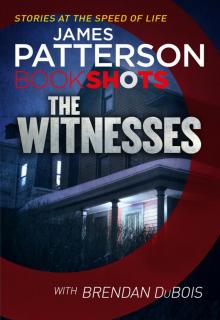 The Witnesses
The Witnesses The 9th Judgment
The 9th Judgment Against Medical Advice
Against Medical Advice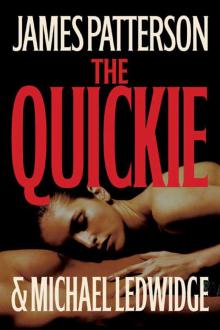 The Quickie
The Quickie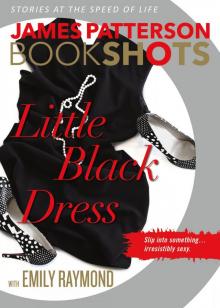 Little Black Dress
Little Black Dress Private Oz
Private Oz Homeroom Diaries
Homeroom Diaries Gone
Gone Lifeguard
Lifeguard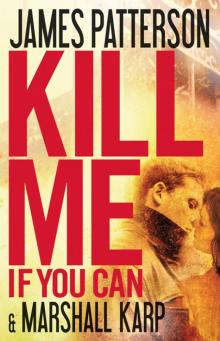 Kill Me if You Can
Kill Me if You Can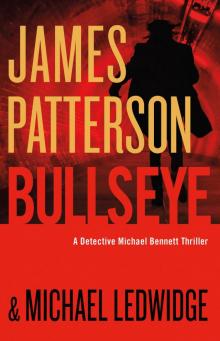 Bullseye
Bullseye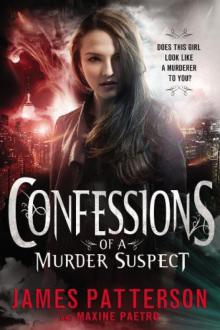 Confessions of a Murder Suspect
Confessions of a Murder Suspect Black Friday
Black Friday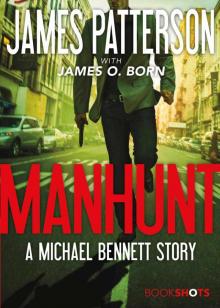 Manhunt
Manhunt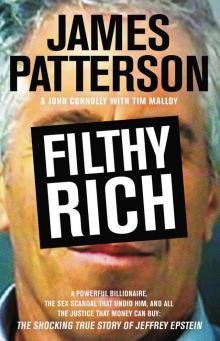 Filthy Rich
Filthy Rich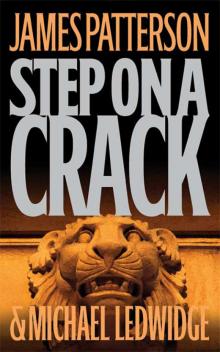 Step on a Crack
Step on a Crack Private
Private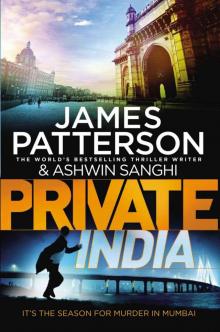 Private India
Private India Game Over
Game Over Private Sydney
Private Sydney The Murder House
The Murder House Mistress
Mistress I, Michael Bennett
I, Michael Bennett The Gift
The Gift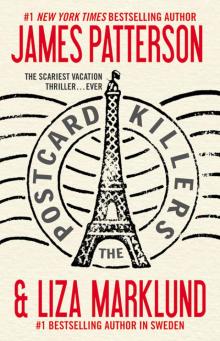 The Postcard Killers
The Postcard Killers The Shut-In
The Shut-In The House Husband
The House Husband The Lost
The Lost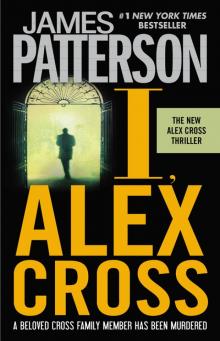 I, Alex Cross
I, Alex Cross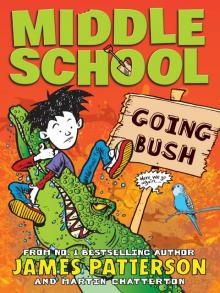 Going Bush
Going Bush 16th Seduction
16th Seduction The Jester
The Jester Along Came a Spider
Along Came a Spider The Lake House
The Lake House Four Blind Mice
Four Blind Mice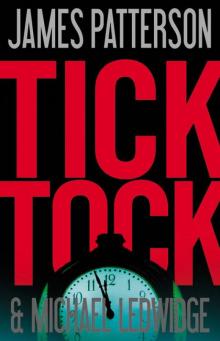 Tick Tock
Tick Tock Private L.A.
Private L.A.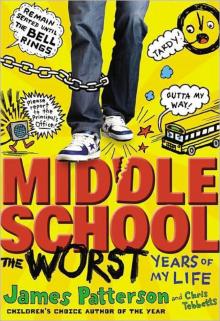 Middle School, the Worst Years of My Life
Middle School, the Worst Years of My Life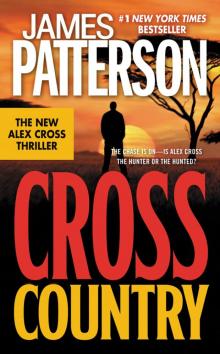 Cross Country
Cross Country The Final Warning
The Final Warning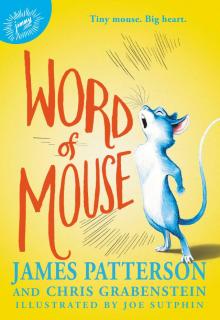 Word of Mouse
Word of Mouse Come and Get Us
Come and Get Us Sail
Sail I Funny TV: A Middle School Story
I Funny TV: A Middle School Story Private London
Private London Save Rafe!
Save Rafe!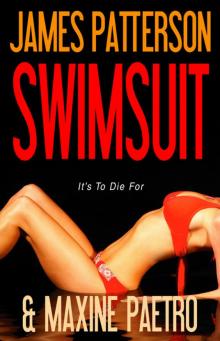 Swimsuit
Swimsuit Sam's Letters to Jennifer
Sam's Letters to Jennifer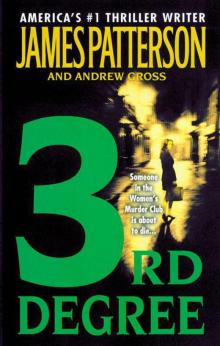 3rd Degree
3rd Degree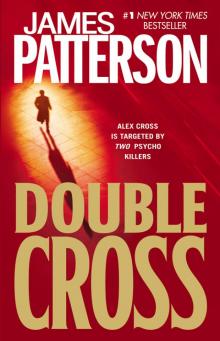 Double Cross
Double Cross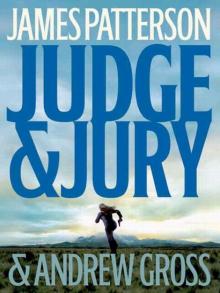 Judge & Jury
Judge & Jury Kiss the Girls
Kiss the Girls Second Honeymoon
Second Honeymoon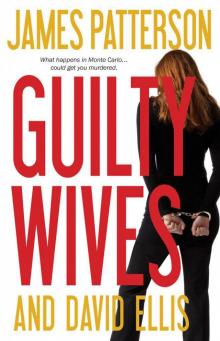 Guilty Wives
Guilty Wives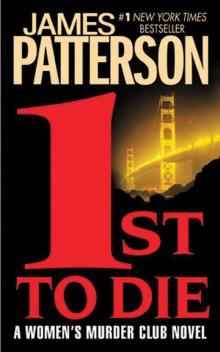 1st to Die
1st to Die NYPD Red 4
NYPD Red 4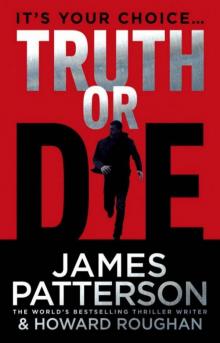 Truth or Die
Truth or Die Private Vegas
Private Vegas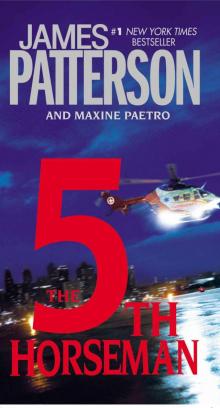 The 5th Horseman
The 5th Horseman 7th Heaven
7th Heaven I Even Funnier
I Even Funnier Cross My Heart
Cross My Heart Let’s Play Make-Believe
Let’s Play Make-Believe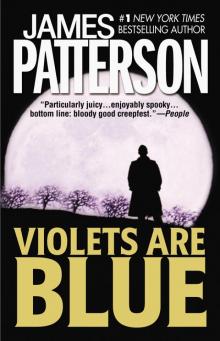 Violets Are Blue
Violets Are Blue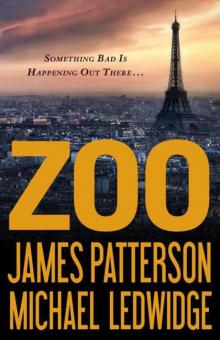 Zoo
Zoo Home Sweet Murder
Home Sweet Murder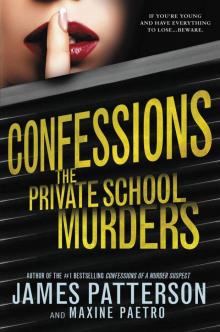 The Private School Murders
The Private School Murders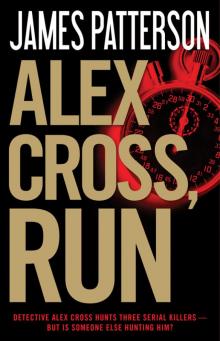 Alex Cross, Run
Alex Cross, Run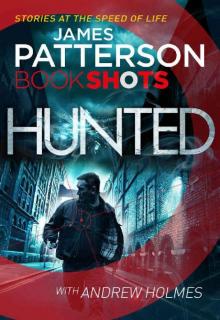 Hunted: BookShots
Hunted: BookShots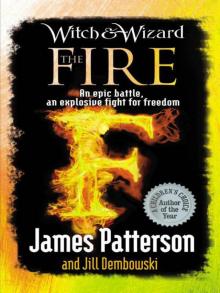 The Fire
The Fire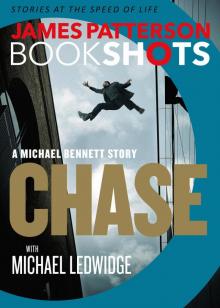 Chase
Chase 14th Deadly Sin
14th Deadly Sin Bloody Valentine
Bloody Valentine The 17th Suspect
The 17th Suspect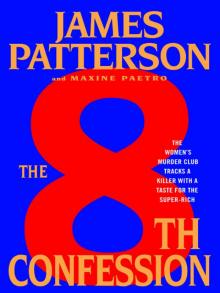 The 8th Confession
The 8th Confession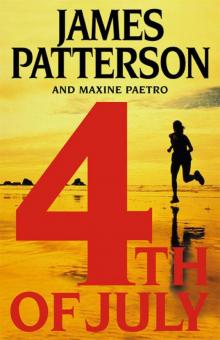 4th of July
4th of July The Angel Experiment
The Angel Experiment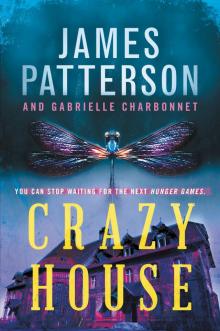 Crazy House
Crazy House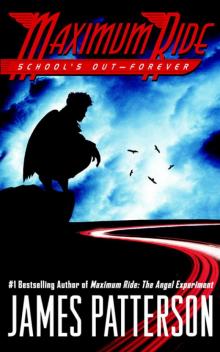 School's Out - Forever
School's Out - Forever Suzanne's Diary for Nicholas
Suzanne's Diary for Nicholas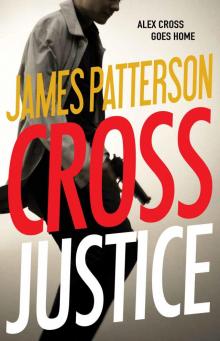 Cross Justice
Cross Justice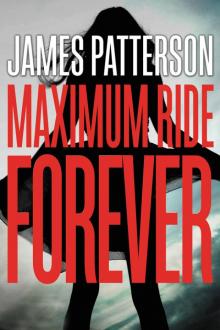 Maximum Ride Forever
Maximum Ride Forever The Thomas Berryman Number
The Thomas Berryman Number Honeymoon
Honeymoon The Medical Examiner
The Medical Examiner Killer Chef
Killer Chef Private Princess
Private Princess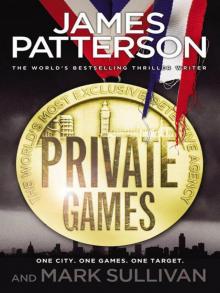 Private Games
Private Games Burn
Burn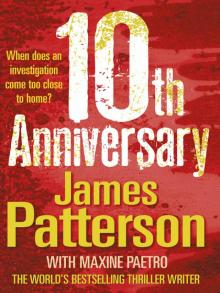 10th Anniversary
10th Anniversary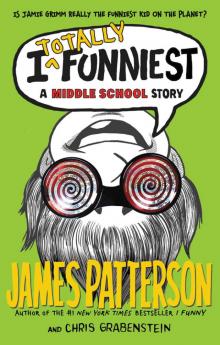 I Totally Funniest: A Middle School Story
I Totally Funniest: A Middle School Story Taking the Titanic
Taking the Titanic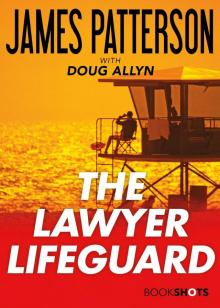 The Lawyer Lifeguard
The Lawyer Lifeguard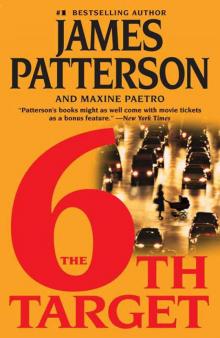 The 6th Target
The 6th Target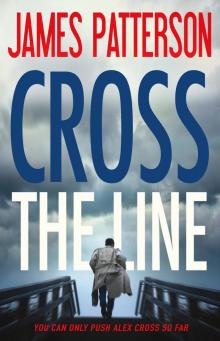 Cross the Line
Cross the Line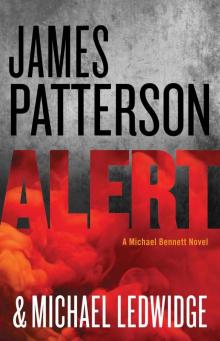 Alert
Alert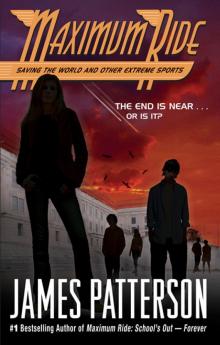 Saving the World and Other Extreme Sports
Saving the World and Other Extreme Sports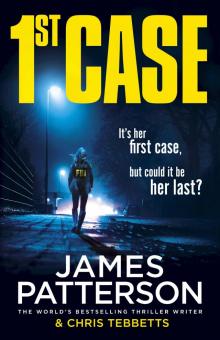 1st Case
1st Case Unlucky 13
Unlucky 13 Haunted
Haunted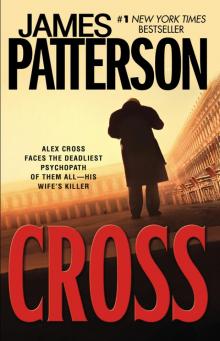 Cross
Cross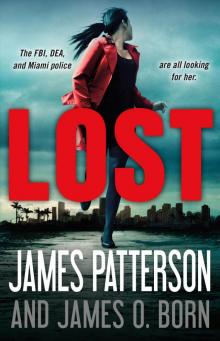 Lost
Lost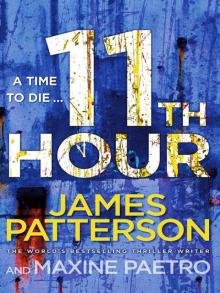 11th Hour
11th Hour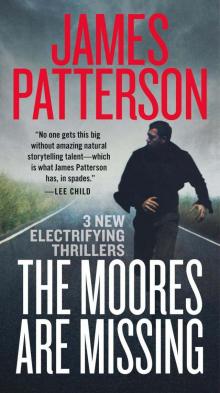 Bookshots Thriller Omnibus
Bookshots Thriller Omnibus Target: Alex Cross
Target: Alex Cross Hope to Die
Hope to Die The Noise
The Noise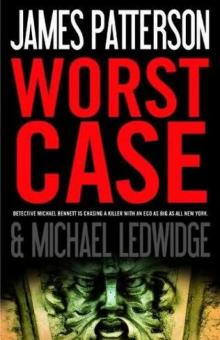 Worst Case
Worst Case Dog's Best Friend
Dog's Best Friend Nevermore: The Final Maximum Ride Adventure
Nevermore: The Final Maximum Ride Adventure I Funny: A Middle School Story
I Funny: A Middle School Story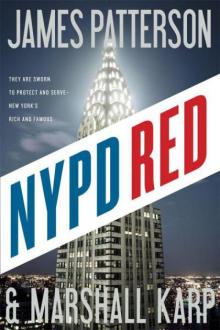 NYPD Red
NYPD Red Till Murder Do Us Part
Till Murder Do Us Part Black & Blue
Black & Blue Fang
Fang Liar Liar
Liar Liar The Inn
The Inn Sundays at Tiffany's
Sundays at Tiffany's Middle School: Escape to Australia
Middle School: Escape to Australia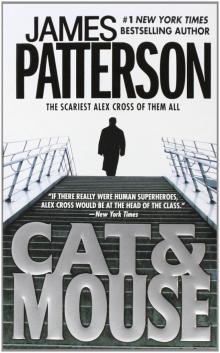 Cat and Mouse
Cat and Mouse Instinct
Instinct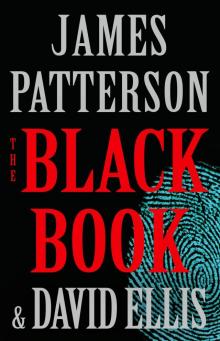 The Black Book
The Black Book London Bridges
London Bridges Toys
Toys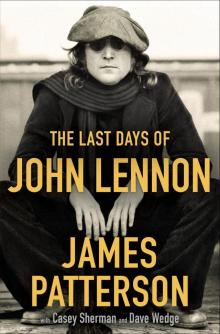 The Last Days of John Lennon
The Last Days of John Lennon Roses Are Red
Roses Are Red Witch & Wizard
Witch & Wizard The Dolls
The Dolls The Christmas Wedding
The Christmas Wedding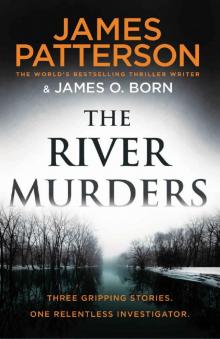 The River Murders
The River Murders The 18th Abduction
The 18th Abduction The 19th Christmas
The 19th Christmas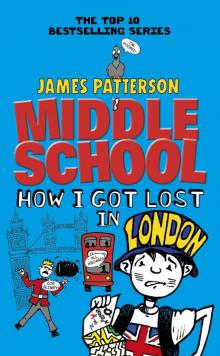 Middle School: How I Got Lost in London
Middle School: How I Got Lost in London Just My Rotten Luck
Just My Rotten Luck Red Alert
Red Alert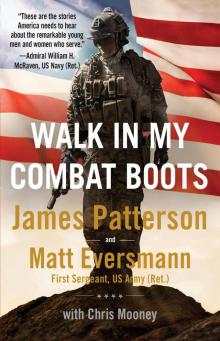 Walk in My Combat Boots
Walk in My Combat Boots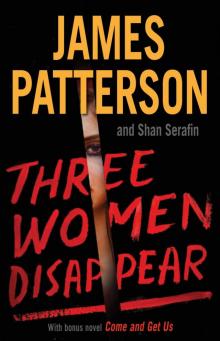 Three Women Disappear
Three Women Disappear 21st Birthday
21st Birthday All-American Adventure
All-American Adventure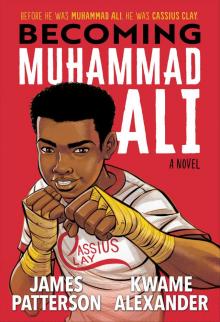 Becoming Muhammad Ali
Becoming Muhammad Ali The Murder of an Angel
The Murder of an Angel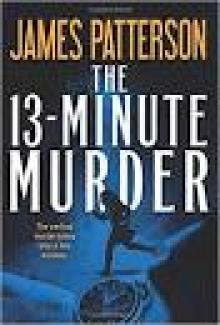 The 13-Minute Murder
The 13-Minute Murder Rebels With a Cause
Rebels With a Cause The Trial
The Trial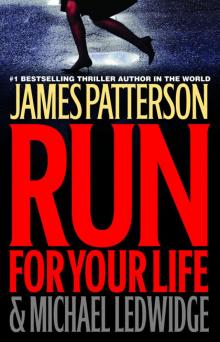 Run for Your Life
Run for Your Life The House Next Door
The House Next Door NYPD Red 2
NYPD Red 2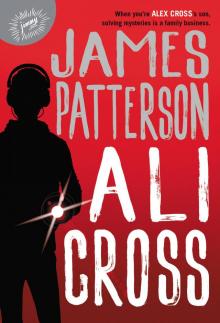 Ali Cross
Ali Cross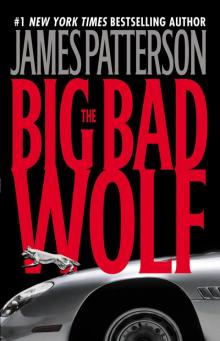 The Big Bad Wolf
The Big Bad Wolf Middle School: My Brother Is a Big, Fat Liar
Middle School: My Brother Is a Big, Fat Liar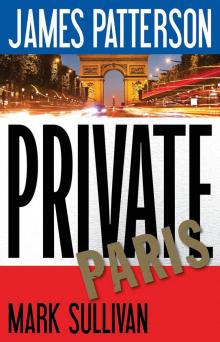 Private Paris
Private Paris Miracle on the 17th Green
Miracle on the 17th Green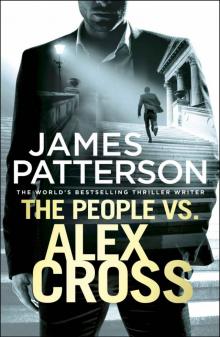 The People vs. Alex Cross
The People vs. Alex Cross The Beach House
The Beach House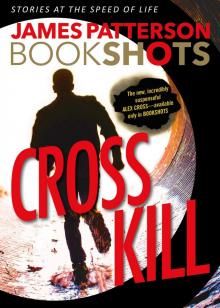 Cross Kill
Cross Kill Dog Diaries
Dog Diaries The President's Daughter
The President's Daughter Happy Howlidays
Happy Howlidays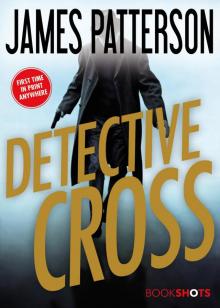 Detective Cross
Detective Cross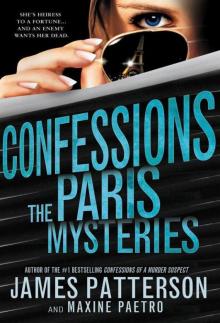 The Paris Mysteries
The Paris Mysteries Watch the Skies
Watch the Skies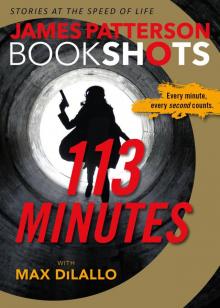 113 Minutes
113 Minutes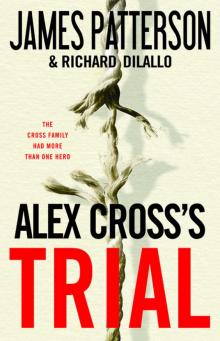 Alex Cross's Trial
Alex Cross's Trial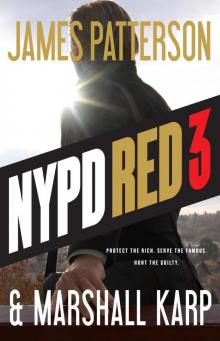 NYPD Red 3
NYPD Red 3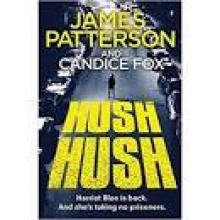 Hush Hush
Hush Hush Now You See Her
Now You See Her Merry Christmas, Alex Cross
Merry Christmas, Alex Cross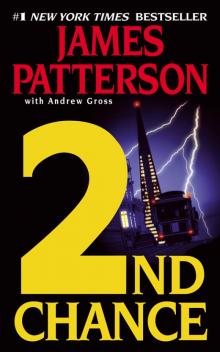 2nd Chance
2nd Chance Private Royals
Private Royals Two From the Heart
Two From the Heart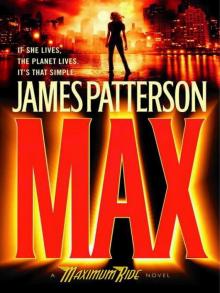 Max
Max I, Funny
I, Funny Blindside (Michael Bennett)
Blindside (Michael Bennett) Sophia, Princess Among Beasts
Sophia, Princess Among Beasts Armageddon
Armageddon Don't Blink
Don't Blink NYPD Red 6
NYPD Red 6 The First Lady
The First Lady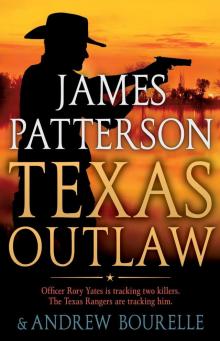 Texas Outlaw
Texas Outlaw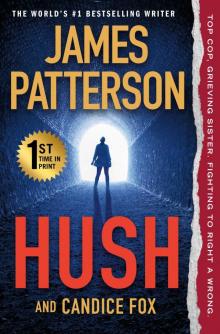 Hush
Hush Beach Road
Beach Road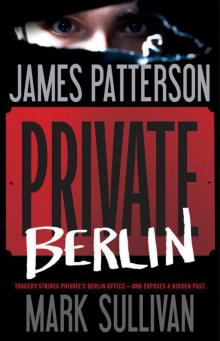 Private Berlin
Private Berlin The Family Lawyer
The Family Lawyer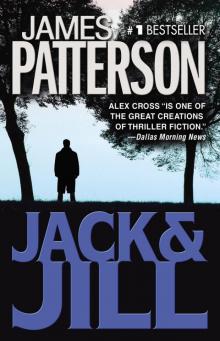 Jack & Jill
Jack & Jill The Midwife Murders
The Midwife Murders Middle School: Rafe's Aussie Adventure
Middle School: Rafe's Aussie Adventure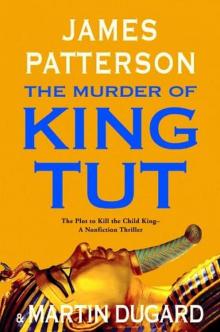 The Murder of King Tut: The Plot to Kill the Child King
The Murder of King Tut: The Plot to Kill the Child King First Love
First Love The Dangerous Days of Daniel X
The Dangerous Days of Daniel X Hawk
Hawk Private Delhi
Private Delhi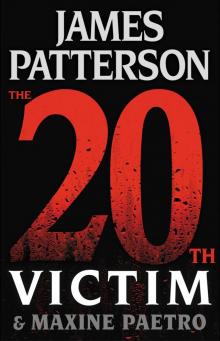 The 20th Victim
The 20th Victim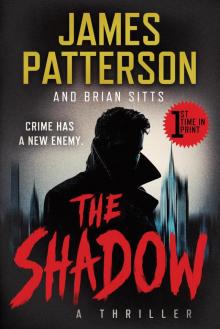 The Shadow
The Shadow Katt vs. Dogg
Katt vs. Dogg The Palm Beach Murders
The Palm Beach Murders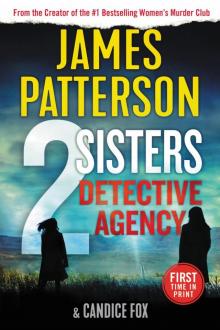 2 Sisters Detective Agency
2 Sisters Detective Agency Humans, Bow Down
Humans, Bow Down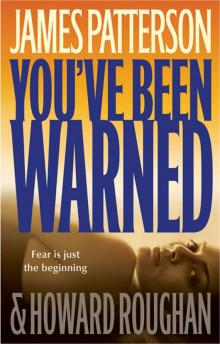 You've Been Warned
You've Been Warned Cradle and All
Cradle and All 20th Victim: (Women’s Murder Club 20) (Women's Murder Club)
20th Victim: (Women’s Murder Club 20) (Women's Murder Club)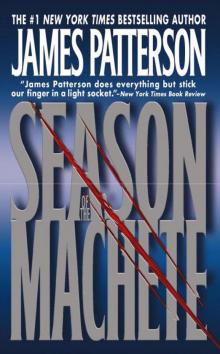 Season of the Machete
Season of the Machete Woman of God
Woman of God Mary, Mary
Mary, Mary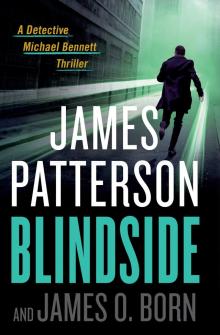 Blindside
Blindside Invisible
Invisible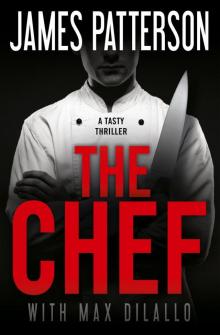 The Chef
The Chef Revenge
Revenge See How They Run
See How They Run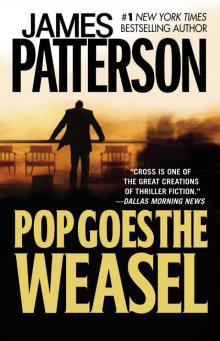 Pop Goes the Weasel
Pop Goes the Weasel 15th Affair
15th Affair Middle School: Get Me Out of Here!
Middle School: Get Me Out of Here!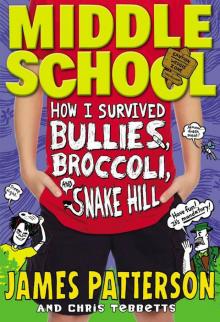 Middle School: How I Survived Bullies, Broccoli, and Snake Hill
Middle School: How I Survived Bullies, Broccoli, and Snake Hill From Hero to Zero - Chris Tebbetts
From Hero to Zero - Chris Tebbetts G'day, America
G'day, America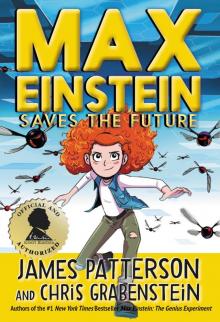 Max Einstein Saves the Future
Max Einstein Saves the Future The Cornwalls Are Gone
The Cornwalls Are Gone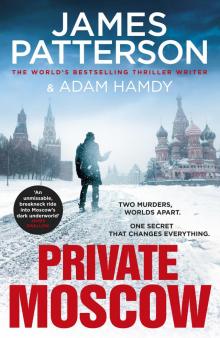 Private Moscow
Private Moscow Two Schools Out - Forever
Two Schools Out - Forever Hollywood 101
Hollywood 101 Deadly Cargo: BookShots
Deadly Cargo: BookShots 21st Birthday (Women's Murder Club)
21st Birthday (Women's Murder Club) The Sky Is Falling
The Sky Is Falling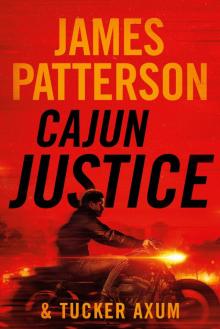 Cajun Justice
Cajun Justice Bennett 06 - Gone
Bennett 06 - Gone The House of Kennedy
The House of Kennedy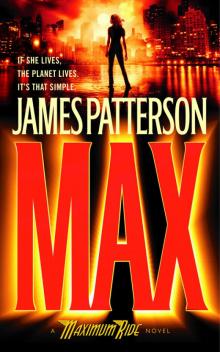 Waterwings
Waterwings Murder is Forever, Volume 2
Murder is Forever, Volume 2 Maximum Ride 02
Maximum Ride 02 Treasure Hunters--The Plunder Down Under
Treasure Hunters--The Plunder Down Under Private Royals: BookShots (A Private Thriller)
Private Royals: BookShots (A Private Thriller) After the End
After the End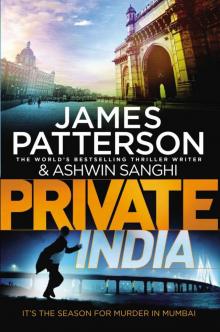 Private India: (Private 8)
Private India: (Private 8) Escape to Australia
Escape to Australia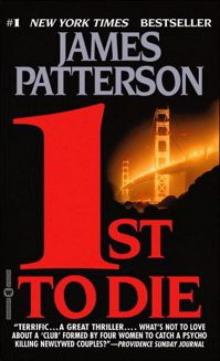 WMC - First to Die
WMC - First to Die Boys Will Be Boys
Boys Will Be Boys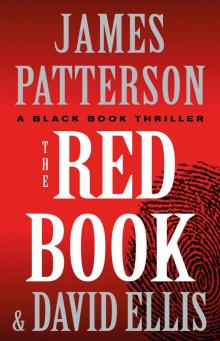 The Red Book
The Red Book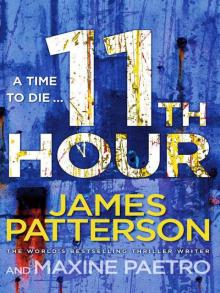 11th hour wmc-11
11th hour wmc-11 Hidden
Hidden You've Been Warned--Again
You've Been Warned--Again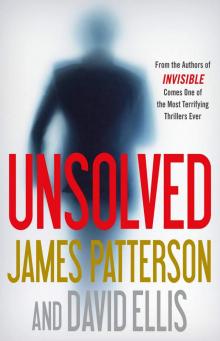 Unsolved
Unsolved Pottymouth and Stoopid
Pottymouth and Stoopid Hope to Die: (Alex Cross 22)
Hope to Die: (Alex Cross 22) The Moores Are Missing
The Moores Are Missing Black & Blue: BookShots (Detective Harriet Blue Series)
Black & Blue: BookShots (Detective Harriet Blue Series) Airport - Code Red: BookShots
Airport - Code Red: BookShots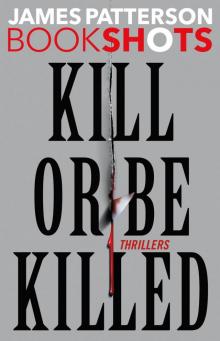 Kill or Be Killed
Kill or Be Killed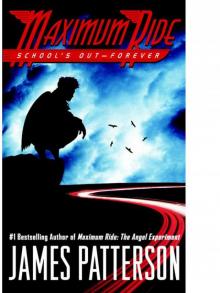 School's Out--Forever
School's Out--Forever When the Wind Blows
When the Wind Blows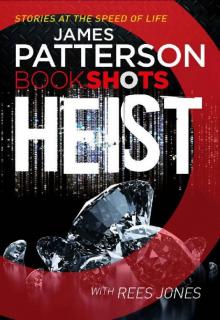 Heist: BookShots
Heist: BookShots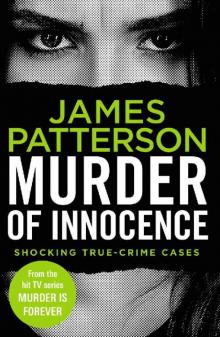 Murder of Innocence (Murder Is Forever)
Murder of Innocence (Murder Is Forever) Red Alert_An NYPD Red Mystery
Red Alert_An NYPD Red Mystery Malicious
Malicious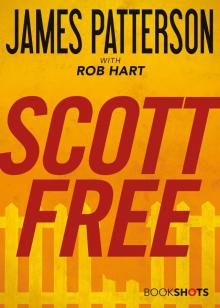 Scott Free
Scott Free The Summer House
The Summer House French Kiss
French Kiss Treasure Hunters
Treasure Hunters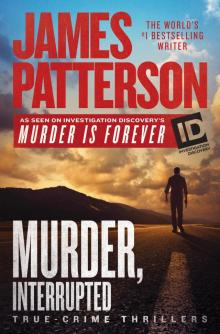 Murder Is Forever, Volume 1
Murder Is Forever, Volume 1 Secret of the Forbidden City
Secret of the Forbidden City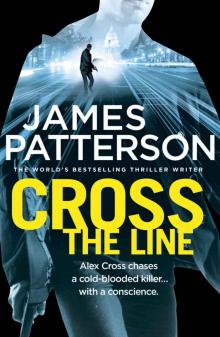 Cross the Line: (Alex Cross 24)
Cross the Line: (Alex Cross 24)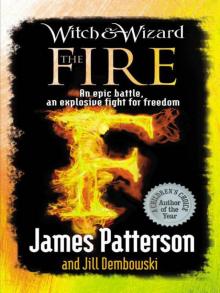 Witch & Wizard: The Fire
Witch & Wizard: The Fire![Women's Murder Club [06] The 6th Target Read online](http://i1.bookreadfree.com/i/03/24/womens_murder_club_06_the_6th_target_preview.jpg) Women's Murder Club [06] The 6th Target
Women's Murder Club [06] The 6th Target Cross My Heart ac-21
Cross My Heart ac-21 Alex Cross’s Trial ак-15
Alex Cross’s Trial ак-15 Alex Cross 03 - Jack & Jill
Alex Cross 03 - Jack & Jill Liar Liar: (Harriet Blue 3) (Detective Harriet Blue Series)
Liar Liar: (Harriet Blue 3) (Detective Harriet Blue Series) Cross Country ак-14
Cross Country ак-14 Honeymoon h-1
Honeymoon h-1 Maximum Ride: The Angel Experiment
Maximum Ride: The Angel Experiment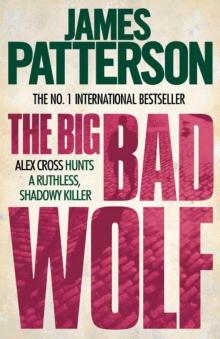 The Big Bad Wolf ак-9
The Big Bad Wolf ак-9 Dead Heat: BookShots (Book Shots)
Dead Heat: BookShots (Book Shots) Kill and Tell
Kill and Tell Avalanche
Avalanche Robot Revolution
Robot Revolution Public School Superhero
Public School Superhero 12th of Never
12th of Never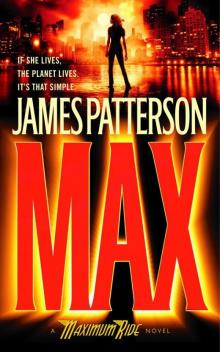 Max: A Maximum Ride Novel
Max: A Maximum Ride Novel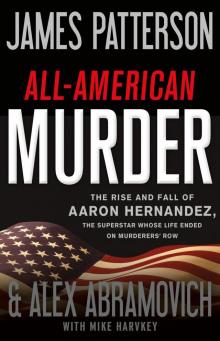 All-American Murder
All-American Murder Murder Games
Murder Games Robots Go Wild!
Robots Go Wild! My Life Is a Joke
My Life Is a Joke Private: Gold
Private: Gold Demons and Druids
Demons and Druids Jacky Ha-Ha
Jacky Ha-Ha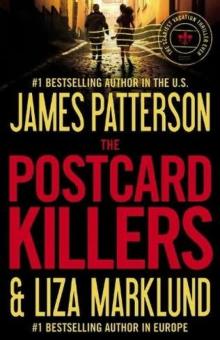 Postcard killers
Postcard killers Princess: A Private Novel
Princess: A Private Novel Kill Alex Cross ac-18
Kill Alex Cross ac-18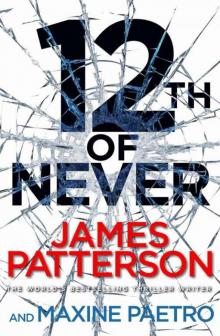 12th of Never wmc-12
12th of Never wmc-12 The Murder of King Tut
The Murder of King Tut I Totally Funniest
I Totally Funniest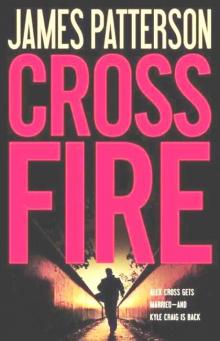 Cross Fire ак-17
Cross Fire ак-17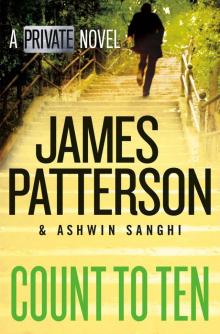 Count to Ten
Count to Ten![Women's Murder Club [10] 10th Anniversary Read online](http://i1.bookreadfree.com/i1/03/30/womens_murder_club_10_10th_anniversary_preview.jpg) Women's Murder Club [10] 10th Anniversary
Women's Murder Club [10] 10th Anniversary![Women's Murder Club [01] 1st to Die Read online](http://i1.bookreadfree.com/i1/03/31/womens_murder_club_01_1st_to_die_preview.jpg) Women's Murder Club [01] 1st to Die
Women's Murder Club [01] 1st to Die I, Michael Bennett mb-5
I, Michael Bennett mb-5 Nooners
Nooners![Women's Murder Club [08] The 8th Confession Read online](http://i1.bookreadfree.com/i1/04/03/womens_murder_club_08_the_8th_confession_preview.jpg) Women's Murder Club [08] The 8th Confession
Women's Murder Club [08] The 8th Confession Private jm-1
Private jm-1 Treasure Hunters: Danger Down the Nile
Treasure Hunters: Danger Down the Nile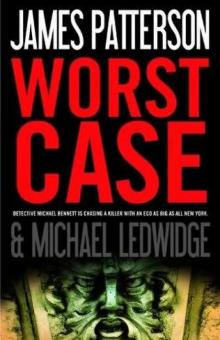 Worst Case mb-3
Worst Case mb-3 Don’t Blink
Don’t Blink The Games
The Games The Medical Examiner: A Women's Murder Club Story
The Medical Examiner: A Women's Murder Club Story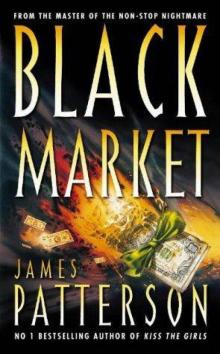 Black Market
Black Market Gone mb-6
Gone mb-6![Women's Murder Club [02] 2nd Chance Read online](http://i1.bookreadfree.com/i1/04/04/womens_murder_club_02_2nd_chance_preview.jpg) Women's Murder Club [02] 2nd Chance
Women's Murder Club [02] 2nd Chance French Twist
French Twist Kenny Wright
Kenny Wright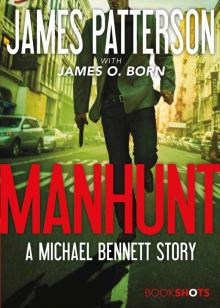 Manhunt: A Michael Bennett Story
Manhunt: A Michael Bennett Story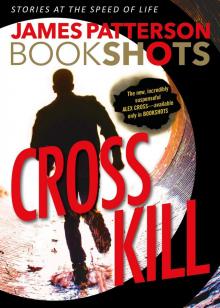 Cross Kill: An Alex Cross Story
Cross Kill: An Alex Cross Story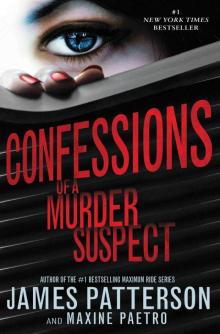 Confessions of a Murder Suspect td-1
Confessions of a Murder Suspect td-1 Second Honeymoon h-2
Second Honeymoon h-2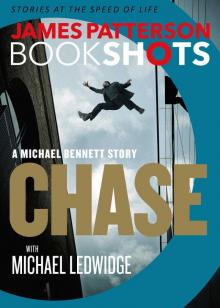 Chase_A BookShot_A Michael Bennett Story
Chase_A BookShot_A Michael Bennett Story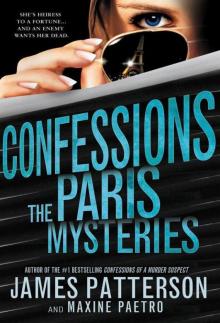 Confessions: The Paris Mysteries
Confessions: The Paris Mysteries![Women's Murder Club [09] The 9th Judgment Read online](http://i1.bookreadfree.com/i2/04/08/womens_murder_club_09_the_9th_judgment_preview.jpg) Women's Murder Club [09] The 9th Judgment
Women's Murder Club [09] The 9th Judgment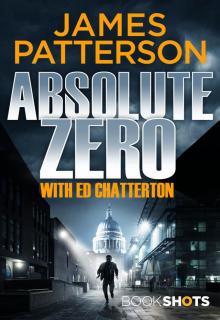 Absolute Zero
Absolute Zero Nevermore: The Final Maximum Ride Adventure mr-8
Nevermore: The Final Maximum Ride Adventure mr-8 Angel: A Maximum Ride Novel mr-7
Angel: A Maximum Ride Novel mr-7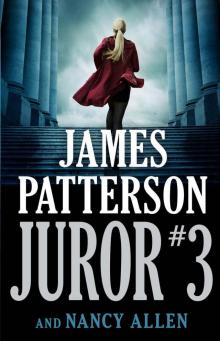 Juror #3
Juror #3 Million-Dollar Mess Down Under
Million-Dollar Mess Down Under The Verdict: BookShots (A Jon Roscoe Thriller)
The Verdict: BookShots (A Jon Roscoe Thriller)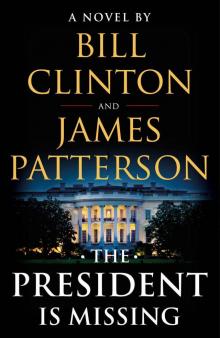 The President Is Missing: A Novel
The President Is Missing: A Novel![Women's Murder Club [04] 4th of July Read online](http://i1.bookreadfree.com/i2/04/06/womens_murder_club_04_4th_of_july_preview.jpg) Women's Murder Club [04] 4th of July
Women's Murder Club [04] 4th of July The Hostage: BookShots (Hotel Series)
The Hostage: BookShots (Hotel Series) $10,000,000 Marriage Proposal
$10,000,000 Marriage Proposal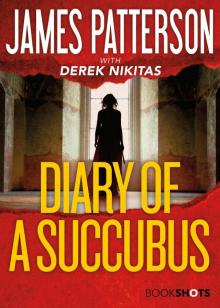 Diary of a Succubus
Diary of a Succubus Unbelievably Boring Bart
Unbelievably Boring Bart Angel: A Maximum Ride Novel
Angel: A Maximum Ride Novel Stingrays
Stingrays Confessions: The Private School Murders
Confessions: The Private School Murders Stealing Gulfstreams
Stealing Gulfstreams![Women's Murder Club [05] The 5th Horseman Read online](http://i1.bookreadfree.com/i2/04/05/womens_murder_club_05_the_5th_horseman_preview.jpg) Women's Murder Club [05] The 5th Horseman
Women's Murder Club [05] The 5th Horseman Zoo 2
Zoo 2 Jack Morgan 02 - Private London
Jack Morgan 02 - Private London Treasure Hunters--Quest for the City of Gold
Treasure Hunters--Quest for the City of Gold The Christmas Mystery
The Christmas Mystery Murder in Paradise
Murder in Paradise Kidnapped: BookShots (A Jon Roscoe Thriller)
Kidnapped: BookShots (A Jon Roscoe Thriller) Triple Homicide_Thrillers
Triple Homicide_Thrillers 16th Seduction: (Women’s Murder Club 16) (Women's Murder Club)
16th Seduction: (Women’s Murder Club 16) (Women's Murder Club) 14th Deadly Sin: (Women’s Murder Club 14)
14th Deadly Sin: (Women’s Murder Club 14) Texas Ranger
Texas Ranger Witch & Wizard 04 - The Kiss
Witch & Wizard 04 - The Kiss![Women's Murder Club [03] 3rd Degree Read online](http://i1.bookreadfree.com/i2/04/12/womens_murder_club_03_3rd_degree_preview.jpg) Women's Murder Club [03] 3rd Degree
Women's Murder Club [03] 3rd Degree Break Point: BookShots
Break Point: BookShots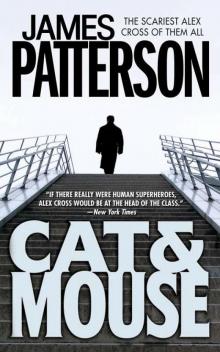 Alex Cross 04 - Cat & Mouse
Alex Cross 04 - Cat & Mouse Maximum Ride
Maximum Ride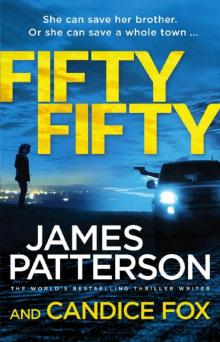 Fifty Fifty: (Harriet Blue 2) (Detective Harriet Blue Series)
Fifty Fifty: (Harriet Blue 2) (Detective Harriet Blue Series) Alex Cross 02 - Kiss the Girls
Alex Cross 02 - Kiss the Girls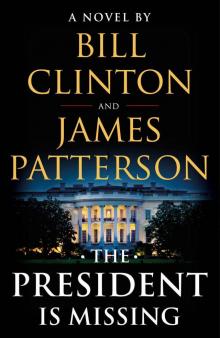 The President Is Missing
The President Is Missing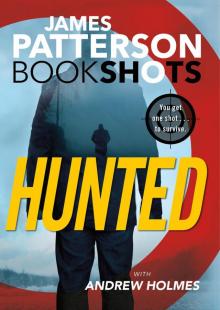 Hunted
Hunted House of Robots
House of Robots Dangerous Days of Daniel X
Dangerous Days of Daniel X Tick Tock mb-4
Tick Tock mb-4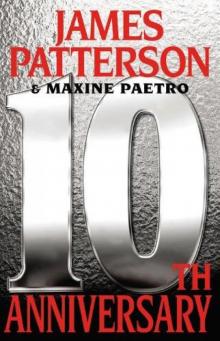 10th Anniversary wmc-10
10th Anniversary wmc-10 The Exile
The Exile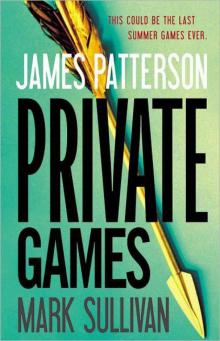 Private Games-Jack Morgan 4 jm-4
Private Games-Jack Morgan 4 jm-4 Burn: (Michael Bennett 7)
Burn: (Michael Bennett 7) Laugh Out Loud
Laugh Out Loud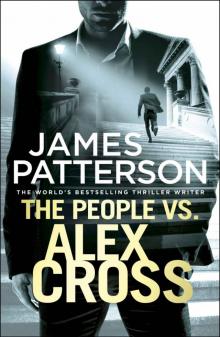 The People vs. Alex Cross: (Alex Cross 25)
The People vs. Alex Cross: (Alex Cross 25) Peril at the Top of the World
Peril at the Top of the World I Funny TV
I Funny TV Merry Christmas, Alex Cross ac-19
Merry Christmas, Alex Cross ac-19 #1 Suspect jm-3
#1 Suspect jm-3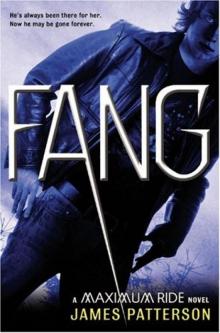 Fang: A Maximum Ride Novel
Fang: A Maximum Ride Novel![Women's Murder Club [07] 7th Heaven Read online](http://i1.bookreadfree.com/i2/04/13/womens_murder_club_07_7th_heaven_preview.jpg) Women's Murder Club [07] 7th Heaven
Women's Murder Club [07] 7th Heaven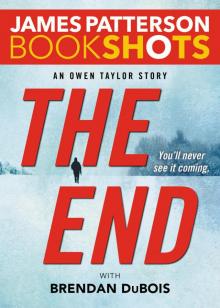 The End
The End